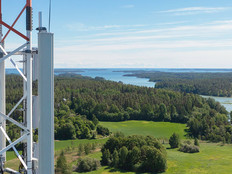True to Form
Technicians, engineers and managers at NASA’s Jet Propulsion Laboratory are using more than telescopes these days to see into the distance — with video conferencing technology, they can look in on colleagues across the country and even across the globe.
JPL is an early government adopter that has found that easily accessible, high-definition video conferencing technology can change its employees’ day-to-day work habits.
The lab uses standards-based HD video conferencing equipment from LifeSize Communications and Polycom to serve up highly detailed conferencing capabilities not only among the 5,000 employees and 100 buildings on its Pasadena, Calif., campus, but also to partners such as NASA’s Johnson Space Center in Houston and many sites across the globe, says Tom Soderstrom, chief technology officer in the JPL Office of the CIO.
Getting Closer
The aim is to promote highly interpersonal interactions, Soderstrom says. Ultimately, the lab wants to enable workers to meet face to face without having to travel to do it, he says.
“Everything is about teamwork here, and teamwork is about trust; we establish trust in face-to-face meetings,” Soderstrom says. “Two years ago, we found that typical video-conferencing technology was too limiting and had not become an acceptable substitute for a physical meeting.”
Through its deployment of HD video conferencing, JPL addressed one of the biggest issues in video conferencing: the perception that the exchanges are impersonal.
In survey after survey, users report that the aspect they miss most when using video conferencing is face-to-face communication with their coworkers, according to the Consumer Electronics Association. This was among the top concerns noted in a recent CEA telework study completed in October 2009.
The lifelike detail that HD video conferencing delivers can mitigate that sense of distance, says Soderstrom.
The NASA facility began testing the LifeSize Room system in a few locations on its campus. The remote face-to-face system supports HD video and integrates well with other collaborative applications.
The systems are also affordable and can be connected to a typical plasma TV screen, says Soderstrom. Plus, there’s no lengthy setup procedure for users.
$3.5 billion
The annual travel and hospitality revenue that will
evaporate by 2012 because of video conferencing
SOURCE: Gartner
“The setup needed to be 10 seconds, not 10 minutes,” or users would become frustrated, he says.
Another advantage: The systems did not need custom-built video conferencing rooms. JPL could place them in almost any conference room, which meant they could be deployed quickly — on the fly, if needed — and users would not have to reserve a specific room.
Face-to-Face Classes
The National Defense University in Washington, D.C., shared JPL’s desire for more lifelike long-distance conferencing. The NDU Information Resources Management College (iCollege) wanted better interpersonal communications with its online laboratories across the globe.
The iCollege staff sought a way to bring students and instructors together on a personal level as they worked in the school’s far-flung online cybersecurity, gaming and simulation, emerging technology and telepresence labs. To that end, the school implemented a Polycom RPX RealPresence Experience High Definition 200 room system.
The Polycom system allows up to 18 participants to take part in a more immersive face-to-face classroom experience, even though some of them might be as far away as Sweden, says Michael Piller, who manages all NDU iCollege laboratories.
The system incorporates a seamless 8-foot-long video wall that renders electronic participants in true-to-life dimensions, allowing eye contact and facial expressions to come across naturally, Piller says.
HD video conferencing “is a huge step forward,” Piller says. “It’s vastly more immersive. If you’re in negotiations with someone, you can actually see them sweat.”
Planetary Scope
JPL now has 40 of the LifeSize systems in place throughout its Pasadena campus and across the world. And its engineers have become accustomed to seeing details of not only people but also elements of NASA spacecraft up close, such as the bolts holding a shuttle together.
The systems have become integral to the planning process for monitoring, constructing and launching spacecraft. They were available for the Phoenix Mars Lander, the Gravity Recovery and Interior Laboratory (GRAIL) moon probe and the Wide-field Infrared Survey Explorer (WISE) spacecraft.
“We now put a system in a suitcase and bring it to the launch site, enabling engineers and managers to meet face to face up until the launch,” says Soderstrom.
Emergency travel has decreased among JPL employees, and meetings are quicker and more productive. “We can pack more into meetings and make meaningful decisions more quickly,” Soderstrom says.
Collaboration within the United States and beyond is becoming ever more important to JPL and NASA, and access to easy-to-use HD video conferencing is key to engineering better and faster space missions, Soderstrom says. He expects that soon NASA will host high-quality, remote face-to-face meetings that are truly out of this world — beyond the planet, with its astronauts in space.







